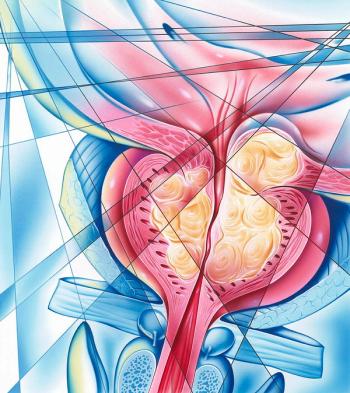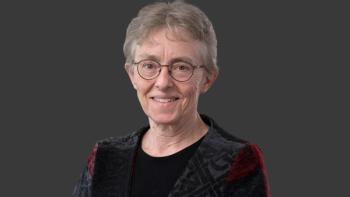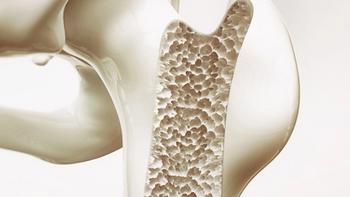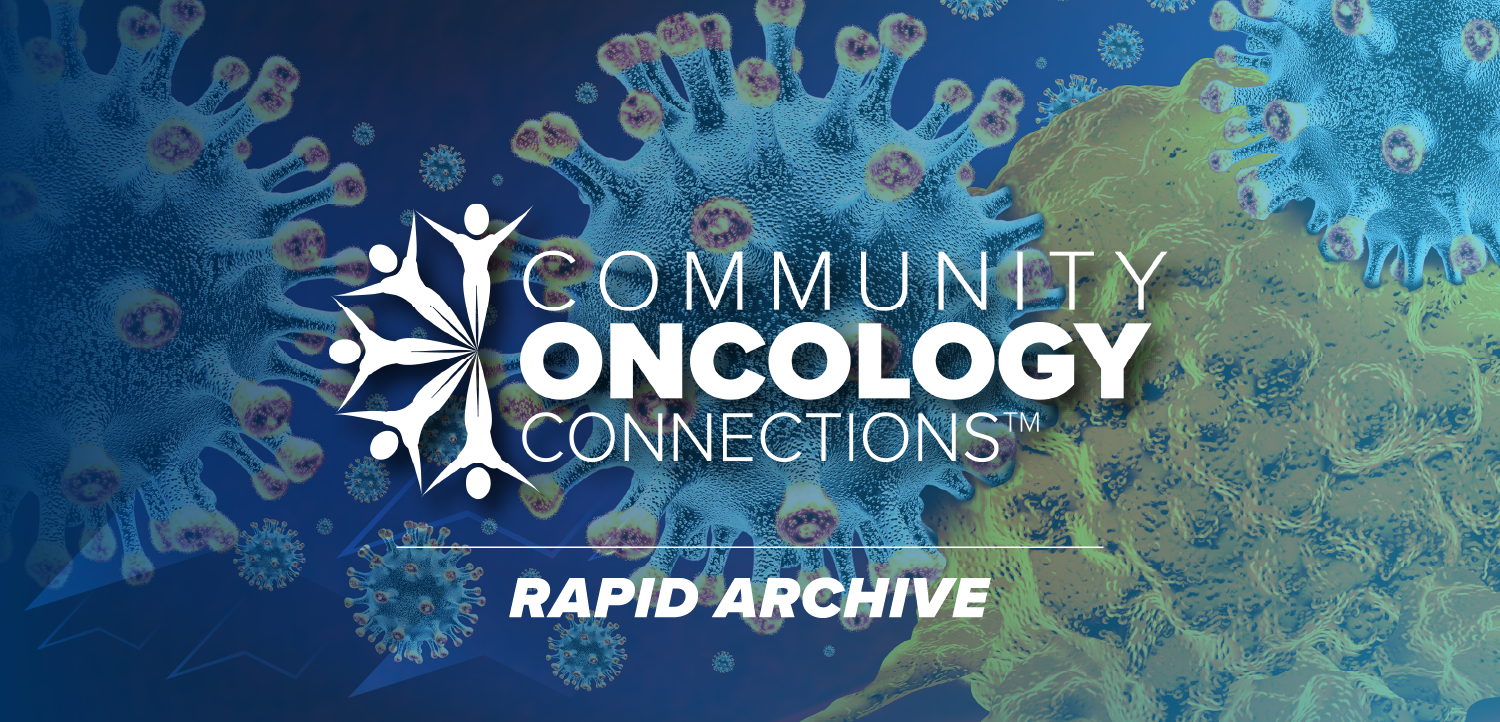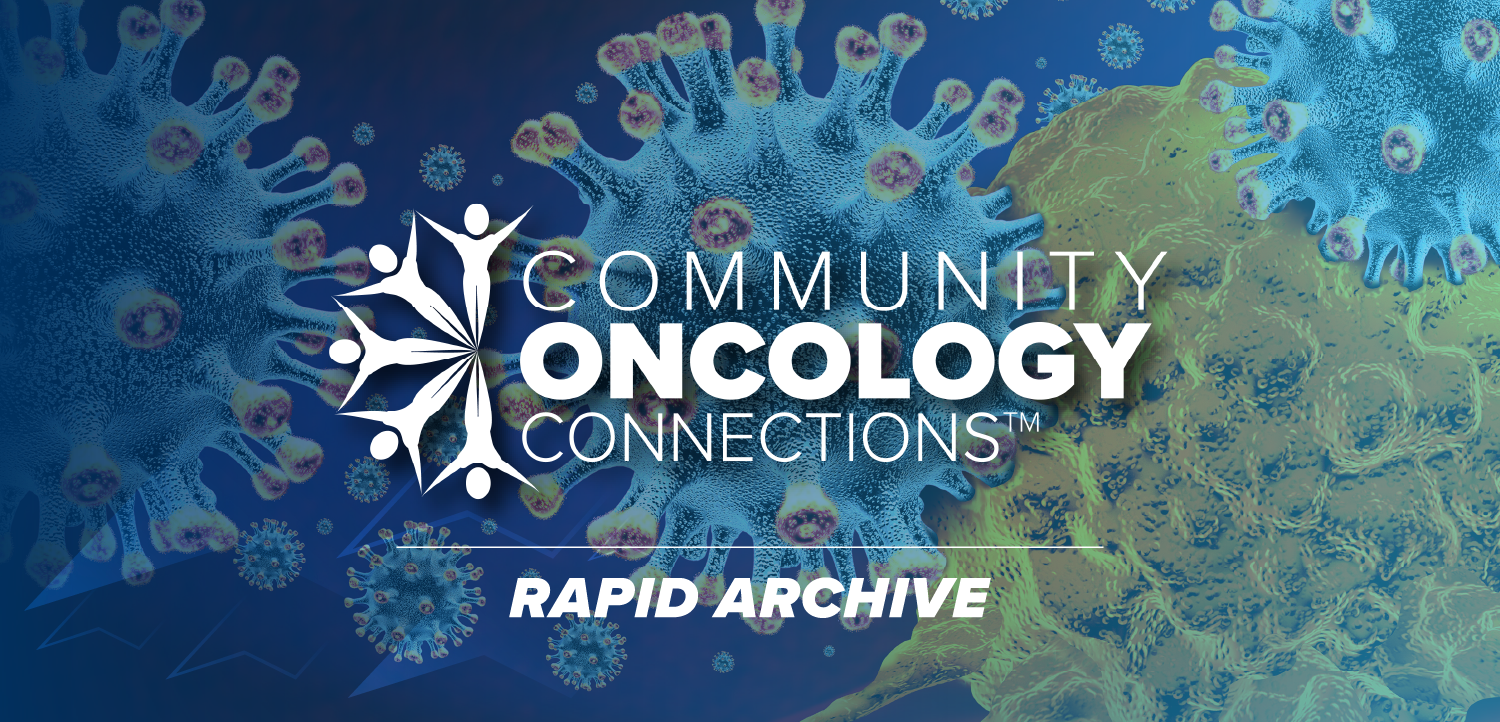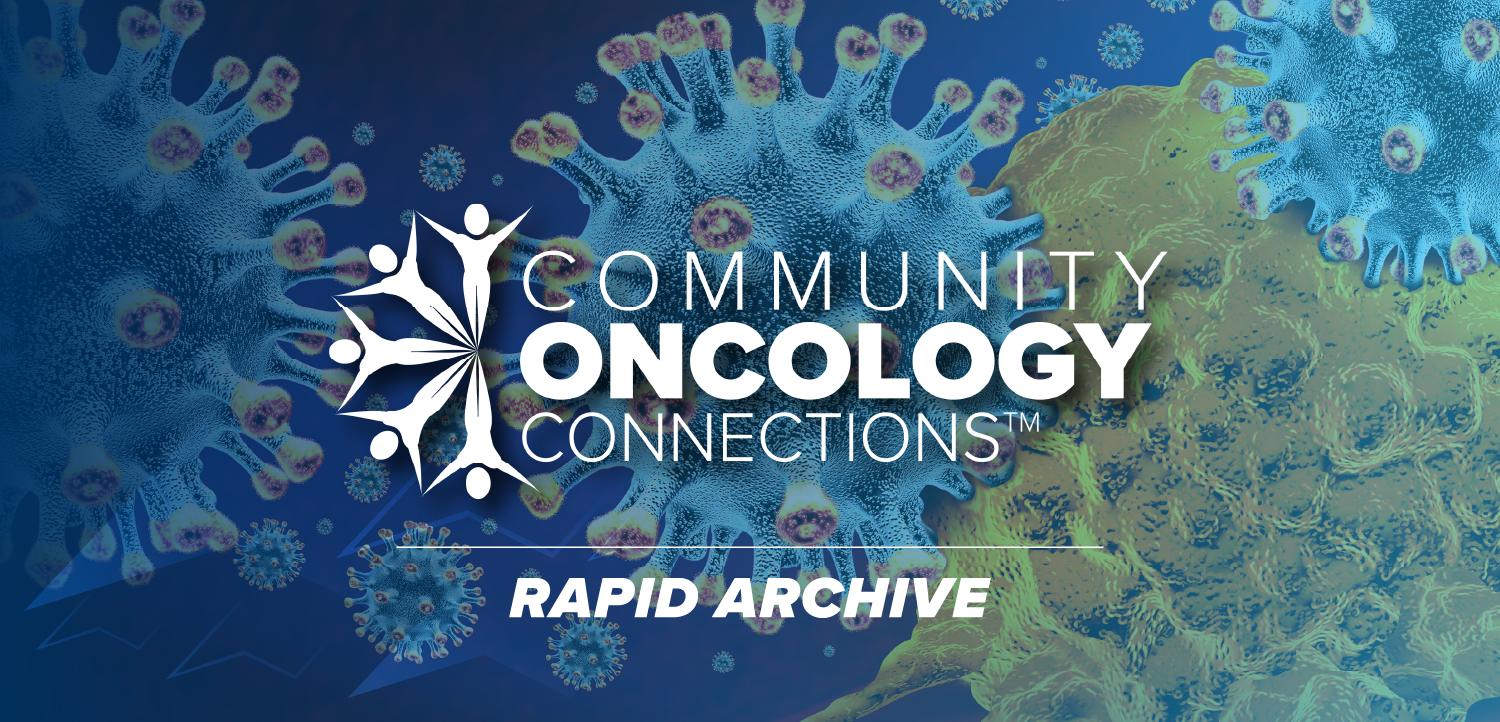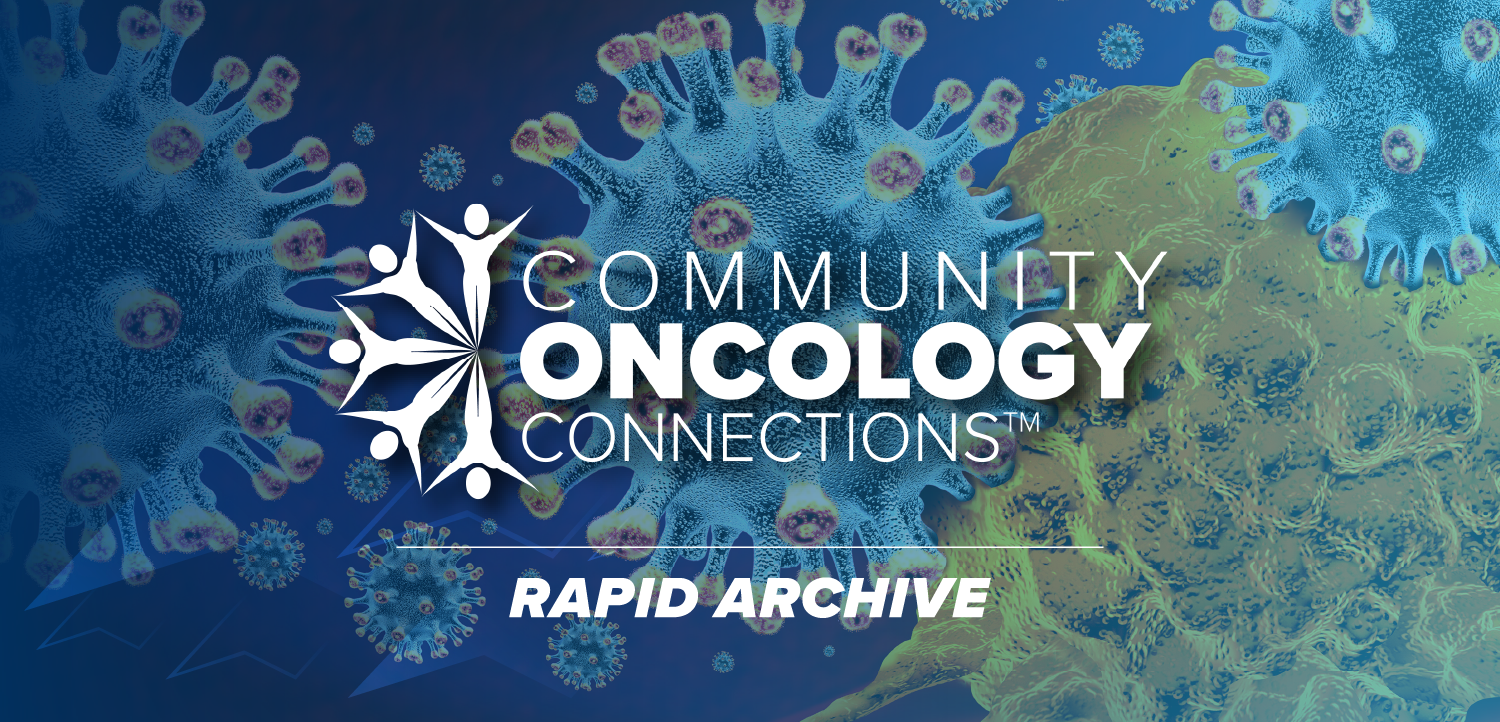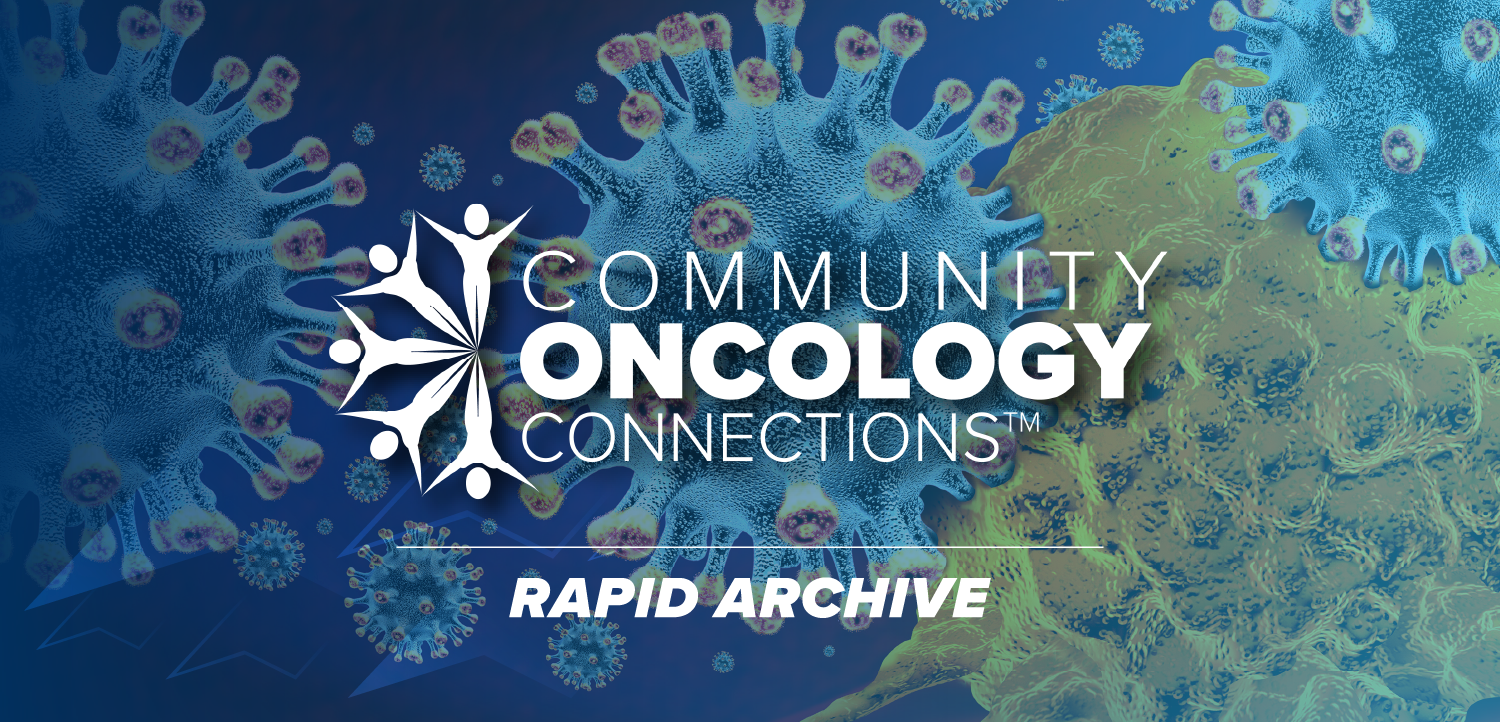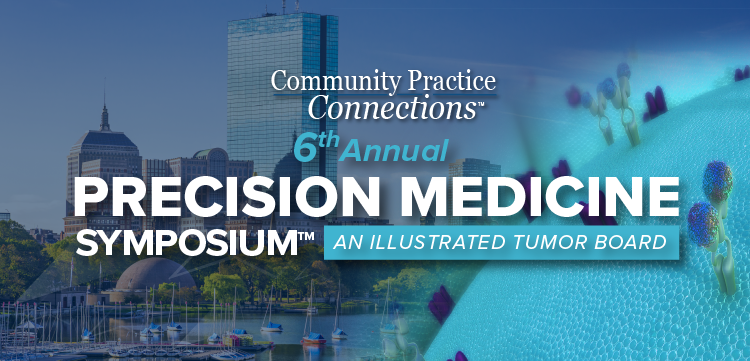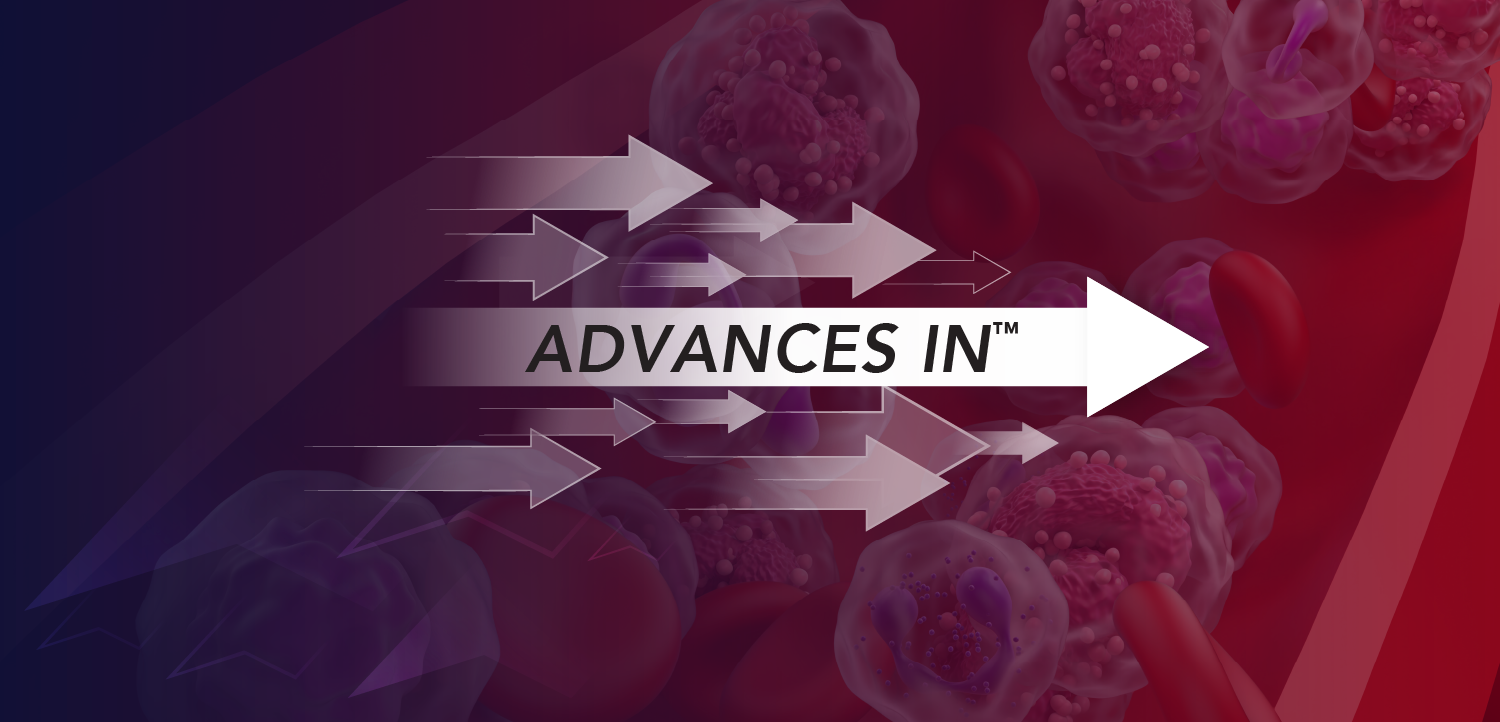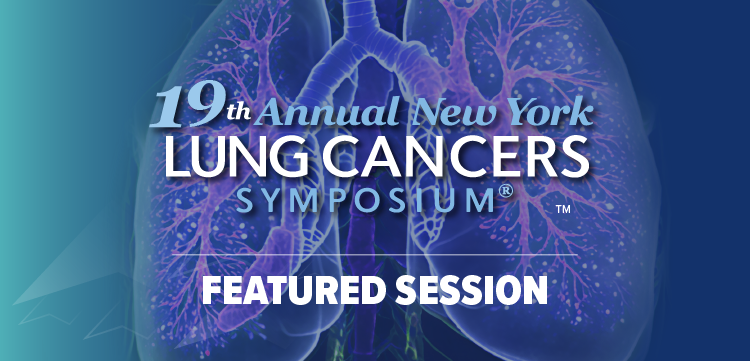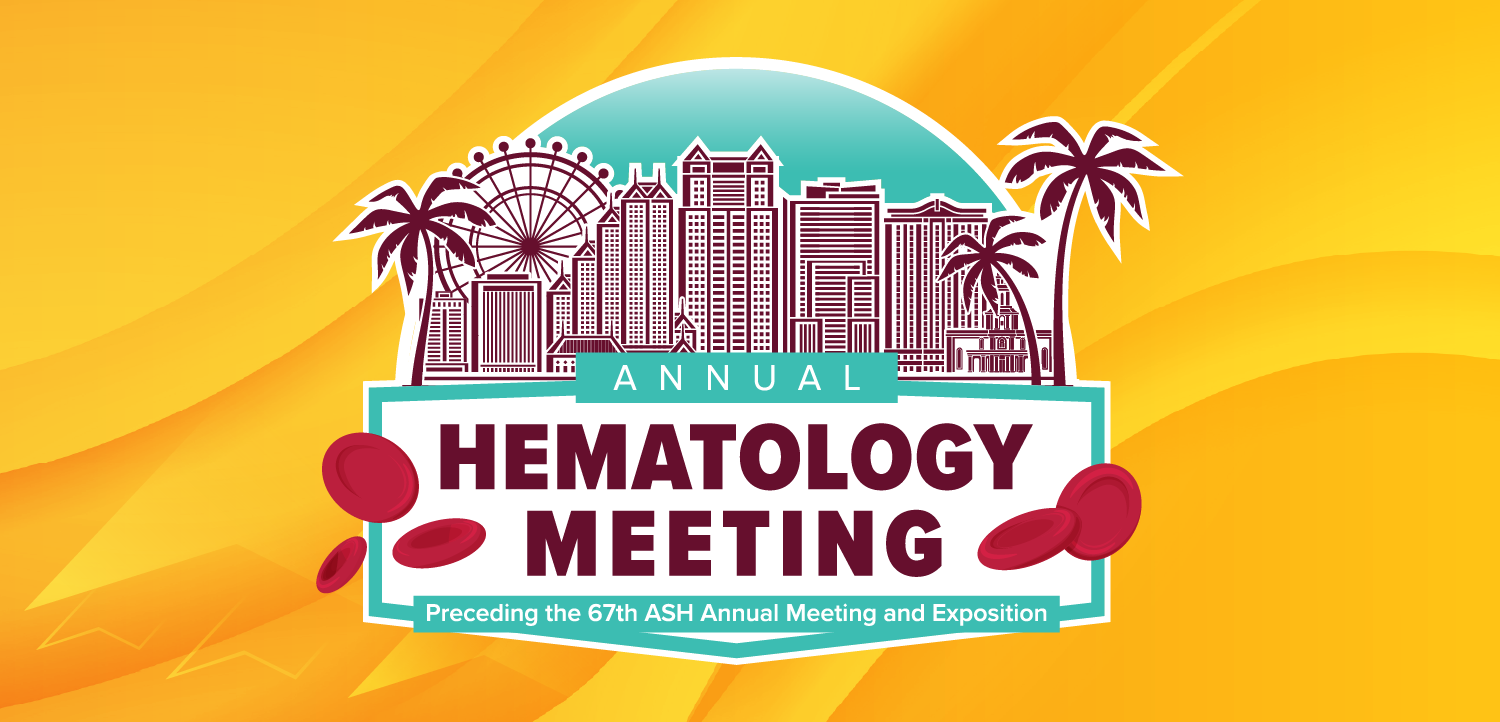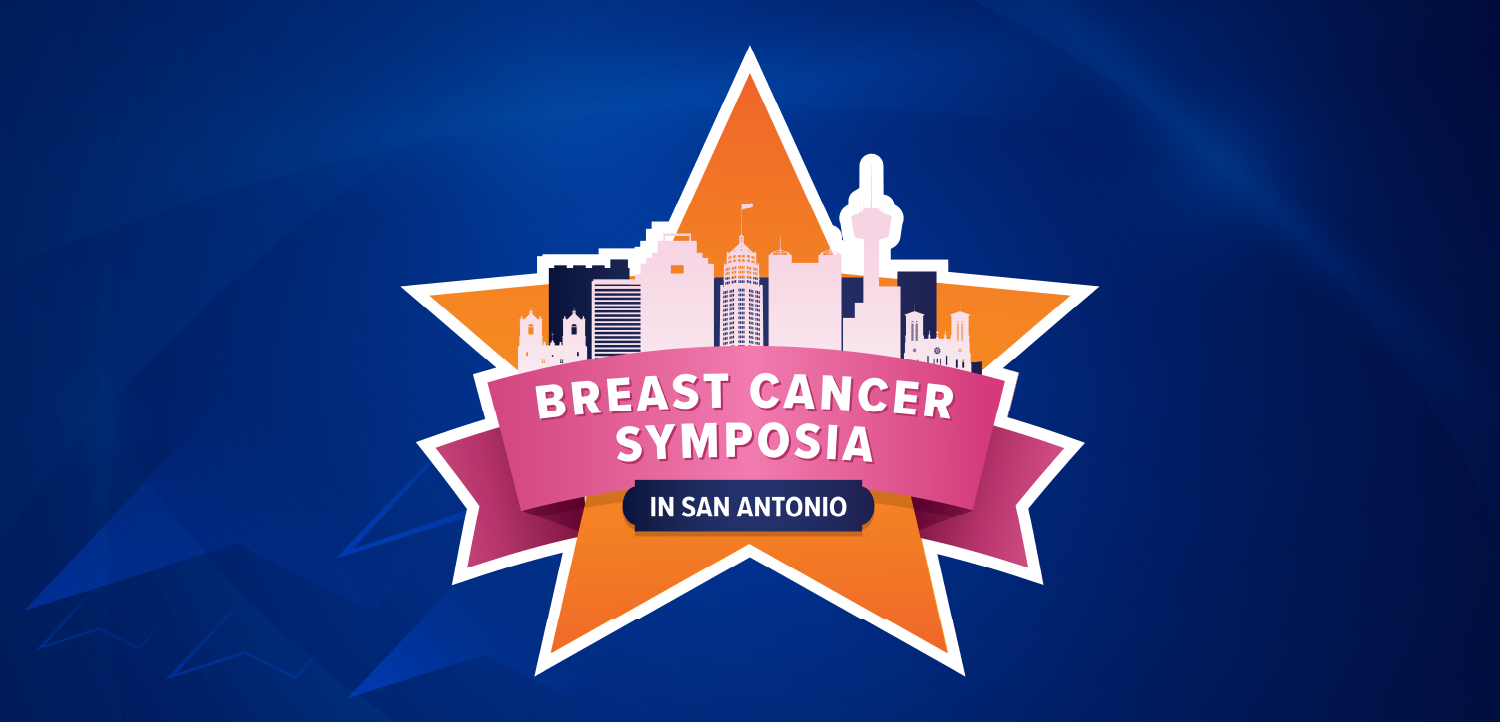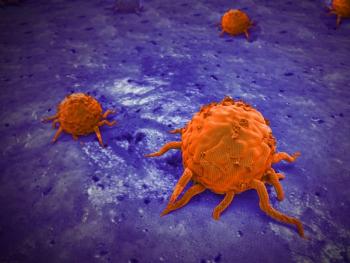
- ONCOLOGY® Companion, Volume 39, Supplement 1
- Volume 39
- Issue 01
- Pages: 21-24
Developments in CAR T-Cell and Bispecific Therapies in R/R Multiple Myeloma
Hematology oncology experts discuss recent developments in CAR T-cell therapies as well as bispecific therapies for the treatment of patients with R/R MM.
A panel of hematology/oncology experts considered ways to treat patients with relapsed/refractory (R/R) multiple myeloma during an Around the Practice program hosted by CancerNetwork. The panelists narrowed in on chimeric antigen receptor (CAR) T-cell therapies and bispecific therapies as the most prominent treatments. They also delved into the specifics of patient care, how to handle step-up dosage, and the promising future of patient care, particularly with all the new data being generated.
The panel was led by Luciano Costa, MD, a professor of medicine in the Division of Hematology and Oncology at the University of Alabama at Birmingham Marnix E. Heersink School of Medicine. Fellow panelists were Bhagirathbhai Dholaria, MBBS, an associate professor of medicine at Vanderbilt University Medical Center in Nashville, Tennessee; C. Ola Landgren, MD, PhD, a professor of medicine, chief of the Division of Myeloma in the Department of Medicine, and director of the Sylvester Myeloma Institute at the University of Miami in Florida, and hematologic malignancies tumor chair of the journal ONCOLOGY®; and Muhamed Baljevic, MD, FACP, an associate professor of medicine in the Division of Hematology/Oncology, director of plasma cell disorders research, and director of the Vanderbilt Amyloidosis Multidisciplinary Program at Vanderbilt-Ingram Cancer Center in Nashville, Tennessee.
Costa / We now have options in the second, third, and fourth lines of therapy—BCMA [B-cell maturation antigen]-directed therapies, GPRC5D-directed therapies, and most importantly, bispecific T-cell engagers in CAR T. When you’re seeing a patient with relapsed multiple myeloma and have to choose among all those new options, what do you take into consideration when guiding that patient?
Landgren / The short answer is that no one knows what the optimal way of doing it is. There is a lot of variation in opinion, and to me, this is a reflection of how the multiple myeloma field is moving into the future. We are moving from guidelines that say, “This is what you should do” to [having] options…. That makes it more difficult, but it’s too early to say exactly how to do things and be definitive about it.
For example, if you give a bispecific monoclonal antibody, you can see that there are patients who acquire point mutations that will result in the loss of some of those spike proteins like BCMA or GPRC5D where the antibodies or the CAR T cells are grabbing. You lose those, and although we talk about BCMA as BCMA, when it comes to therapeutics, not every BCMA-targeted drug goes after those same spike proteins or target proteins on the receptor. If you have one antibody and you have mutations in some of those proteins, that antibody may stop working while another one may work. That’s where we need more discovery work to see what the optimal sequence is and what each of these different mutational readouts potentially means for [patient] management.
Ciltacabtagene autoleucel [cilta-cel; Carvykti] is approved, but there isn’t a bispecific antibody that’s FDA approved, so cilta-cel won’t be [used] until after 4 failed lines of treatment.1 There are a lot of clinical trials that have bispecifics, and I expect with the NCCN [National Comprehensive Cancer Network] guidelines, we probably will have uptake within a year for 1 to 3 prior lines of treatment. It’s all about where the patient is in the sequence of how many prior lines [of therapy they’ve had] and what’s available. If the disease is flaring, progressing, or relapsing, CAR T cells may not be feasible because you need to act [immediately]. If the patient has options, some patients want to do CAR T cells, but other patients want to do antibodies. It’s very much a dance with the patient and the doctor and availability, and CAR T cells can be hard to get access to. It’s easier now that we have much better access, but that has been an issue.
Lastly, if you pick one of them, could you go to the other, and is there a sequence for this? If you do the CAR T-cell therapy [and] if you [experience] relapse after 6 months, the data from my clinical experience would [show] that going with bispecifics for the same target is less likely to work, which makes sense. I would not do that clinically, but if there is a larger window—years away—it most likely will work. Because I have so many options clinically, I would probably pick another target. I would revisit this target again later, and I would do the same [thing] for the antibodies. Time is an important aspect, and we just need more data.
Costa / We have options of BCMA-directed and GPRC5D-directed bispecifics, and it’s a matter of time before we have the options of BCMA- and GPRC5D-directed CAR T-cell therapy. What goes into your consideration of choosing one vs the other, and how do you think about the sequencing of therapy when you make that initial choice?
Dholaria / Going back to what [Landgren] said before, it’s a data-free zone right now, because many of these trials exclude exposure to other similar-class drugs when both CAR T and bispecifics are tested. In reality, when I see a patient with relapsed/refractory multiple myeloma in the fourth line of therapy who had access to both teclistamab-cqyv [Tecvayli] and talquetamab-tgvs [Talvey] or elranatamab-bcmm [Elrexfio] in some cases, there are a few questions I ask.
In terms of efficacy, I think they’re both fantastic, and the progression-free survival [PFS] data [are] very comparable between teclistamab and talquetamab, so it comes down to the tolerance of the toxicity. To distill it down to my patient, I say that with the talquetamab, you will have some decline in your quality of life because of skin, nails, dysgeusia, and all…the gastrointestinal toxicity, but in the long run, your infection- related mortality will be much lower, your risk of ending up in the hospital with pneumonia will be lower, and you may not need quite as much intravenous immunoglobulin. On the flip side, teclistamab is as good a drug in terms of responses and PFS, but it comes with the cost of more immunosuppression and more infection. When I start teclistamab and talquetamab in my patients, patients [taking] teclistamab spend more time in the hospital within 12 months of starting the therapy compared with talquetamab and patients [taking] talquetamab message me more often about the complaints.
That’s the discussion I have with the patient, and I have a good number of patients who will go straight to talquetamab over teclistamab, especially patients who had prior CAR T-cell therapy—of course, that’s a no-brainer. We only have BCMA-targeted CAR T available in the market, so in those patients, [we] are pushing for talquetamab. Even in a CAR T–naive setting, I have been in a few situations where the patient had been burned by quadruplet induction therapy and then had pneumonia and bronchitis that didn’t go away for many weeks. He said, “Doc, I don’t want anything to give me more infection.” In that [scenario], we used talquetamab before teclistamab.
Baljevic / Going back to what [Dholaria] said earlier, [the combination in the phase 1/2 RedirecTT-1 trial (NCT04586426)], for example, is an example of a powerful dual bispecific therapy that’s demonstrating amazing overall responses.2 Even though these antibodies are now being given at the recommended phase 2 dose every2 weeks, you’re absolutely right. The grade 5 adverse effects [AEs] that are infection related are happening. What was striking to me is that about half the patients didn’t get any intravenous immunoglobulin and…only 80% of patients got antiviral prophylaxis. We’ll agree that it has to be 100% of patients in a proper antiviral prophylaxis. We’re certainly learning that while we all are worried about the risk of cytokine release syndrome [CRS] and some of the other neurotoxic complications, certainly with CAR T a little bit more than bispecifics, it’s the infection safety signal, early as well as later on, that is the big concern for us as a practical point of logistics in keeping people safe.
We will learn more. And I would argue that in my clinic, I have seen lower overall rates of infections because we are a little bit more rigid and disciplined with keeping people in proper prophylaxis. At least in our clinic, I would say we haven’t seen the rates of infections [or] complications that trials have reported. That’s our challenge––to rise to that level.
Dholaria / Our practice has evolved—as you know, Dr Baljevic. When we started the initial phase 1 study with elranatamab many years ago, it was all new to us, and we had no idea until we had a few patients with Pseudomonas sepsis and cytomegalovirus reactivation. I’m sure all of you went through this exercise, and you had to, on the fly, develop the institutional protocol for intravenous immunoglobulin and antimicrobial prophylaxis. Now, with more experience, there’s a significant reduction in infections.
Baljevic / [Dr Landgren] made a brilliant point, which was about the mutational landscape of the target proteins for BCMA and GPRC5D, which are, at the moment, the most relevant. [He] also alluded to the question of T-cell fitness and exhaustion because these are therapies, particularly with bispecific antibodies, that depend on our immunity’s inherent strength and capability and [the] health of T cells. As we evolve in our practice patterns and standards, this is where we’ll have to go—thinking rationally about how we sequence our therapies and what therapies we want to more favorably consider as the most immediate prior therapies heading into bispecifics or heading into CAR T. It is becoming more relevant and something that, hopefully, as a field, we can come together [on] and start generating more data that can be evidence based rather than incidentally or opinion based.
Landgren / I 100% agree. I mentioned immune exhaustion. There are studies that have done investigations into this. We know there are not very many studies, but there was a presentation at the 2024 American Society of Clinical Oncology Annual Meeting [in Chicago, Illinois], where they looked at T-cell fitness in patients who have undergone bispecific antibodies and they showed that there is a prognostic difference.3 I mentioned the genomics. Another thing that we have not yet talked about is if you go after BCMA, what [do you do] about soluble BCMA? We don’t know, functionally, what that means, but you could envision [some] major scenarios: One is that it serves as a sink, meaning that you give your drug and it binds to that BCMA that is no longer attached to the tumor cell, but it could also be a reflection of the fact that [when] you go after BCMA and hit it, the disease cells just shed it off all the time. Some cells are more likely to shed off, and that’s what’s going on.
We all know that BCMA, a long time ago, was a biomarker, and then Steven Rosenberg, MD, PhD, at the National Institutes of Health said, “Let’s make it a drug target.” Everything that’s a biomarker could potentially be a drug target, and every drug target could be a biomarker. We also need to look at soluble BCMA; we don’t yet know what the threshold for this is, but there [are] convincing data showing that if you have very high levels of circulating BCMA, the drugs work less well. These are examples of exactly what you address. We should start looking more and more into [things like] mutational signatures, soluble BCMA, [and] immune health and come up with rational precision medication approaches to guide what [medicine is best for] which patient.
Costa / Let’s talk a little bit about the experience of outpatient step-up [dosing]. How do you work with community oncologists to deliver therapies to more patients more effectively and closer to home?
Baljevic / We all recognize that the whole idea with which bispecifics were envisioned and designed and put into practice was for these therapies to be more available in the community practice, where a vast majority of our patients are. As you pointed out, [Dr Dholaria and Dr Landgren], and as some of our other colleagues have published [regarding]…our institutional experience in the lymphoma space, we have completely leveraged [these data] now in the myeloma area, where we have started completely stepping up [dosing for] patients with bispecifics in the outpatient setting. The CAR T therapy for multiple myeloma is also being given exclusively in the outpatient setting. I will point out, however, that we maintain flexibility for admitting patients and doing it in the inpatient setting for vulnerable populations—somebody who doesn’t have a good support system or somebody who may have more comorbid[ities] or have a higher tumor burden and is predicted to have a higher chance of severe AEs.
With respect to bispecifics, we have our team that covers the day shift and external shifts; it’s a continuous handover. We utilize wearable technologies in both the CAR T space and with bispecifics to alert us to early signs of CRS. We’re engaged in trying to learn more about how this can be predicted and what we can do better to anticipate and adjust our actions. We discharge patients…with a dexamethasone script in their pocket, and then if and when they call with a fever, [we tell them] to take that…. That’s resulted in complete interruption of CRS [and] evolution to [the] downgrading of certain CRSs from a higher grade to a lower grade. We step up [dosing for] patients in an accelerated fashion—on days 1, 3, and 5—or in the case of talquetamab, a little bit longer, and we monitor patients for 48 hours after the last step-up dose, so that can be up to 9 days. Certainly, the vast majority of our patients are cared for and delivered during step-up therapy in a fully outpatient setting. We’re not the only ones: Our colleagues at Memorial Sloan Kettering [Cancer Center in New York, New York], Johns Hopkins [Medicine in Baltimore, Maryland], and other places have also published [information about] their experience.
[The ongoing, prospective phase 2 OPTec study (NCT05972135)] is an important study that has recently shown some data on the utility of tocilizumab [Actemra], which we have used for the management of CRS. But just before the first step-up dose, where a small number of patients [received the agent], they didn’t see any CRS. We are at the point where we’re trying to develop strategies that can bridge these gaps. Exactly as you said, [Dr Costa], there [are] too many colleagues of ours in the community [who] are still not onboarded for any form of either CAR T or bispecific therapy that is associated with [a Risk Evaluation and Mitigation Strategy (REMS)] program and requirements [who] would love to give more of this therapy.
Costa / Do you start the patients at your institution and hand it over to the community oncologists?
Baljevic / We generally do. Some of those patients end up staying with us most of the time because that’s the preference of the referring providers. One of the important things is, as you pointed out, tighter collaboration and the finding of different measures that can make community providers more comfortable…. In the lymphoma space, we have 2 bispecifics that are fully approved now that are completely not associated with REMS—glofitamab-gxbm [Columvi] and epcoritamab-bysp [Epkinly]. Because the CRS data [have] been quite favorable [and the] safety profile has been favorable, we don’t have to deliver those in the context of REMS, even though we sometimes do admit those patients for complications. As a myeloma practitioner, I’m very excited for us and the efforts that are currently ongoing with some of our bispecific agents to come to the point of generating data that can be akin to [those of] glofitamab and epcoritamab, where we could give a proposal to the agency to label some in a REMS-independent manner. Things like that can be one of the bridges to the community [physicians] that could make them more comfortable in adopting this for a greater number of patients.
References
- FDA approves ciltacabtagene autoleucel for relapsed or refractory multiple myeloma. FDA. Updated March 7, 2022. Accessed January 13, 2025. https://tinyurl.com/a2m8uyx7
- Cohen YC, Magen H, Gatt M, et al; RedirectTT-1 Investigators and Study Group. Talquetamab plus teclistamab in relapsed or refractory multiple myeloma. N Engl J Med. 2025;392(2):138-149. doi:10.1056/NEJMoa2406536
- Theprungsirikul P, Yu M, Rall K, et al. Associations of T-cell fitness prior to B-cell maturation antigen (BCMA)–targeted chimeric antigen receptor T-cell (CART) and bispecific T-cell engager (BiTE) therapies and efficacy/toxicity in relapsed/refractory multiple myeloma (RRMM). J Clin Oncol. 2024;42(suppl 16):7549. doi:10.1200/JCO.2024.42.16_suppl.7549
Articles in this issue
Newsletter
Stay up to date on recent advances in the multidisciplinary approach to cancer.


